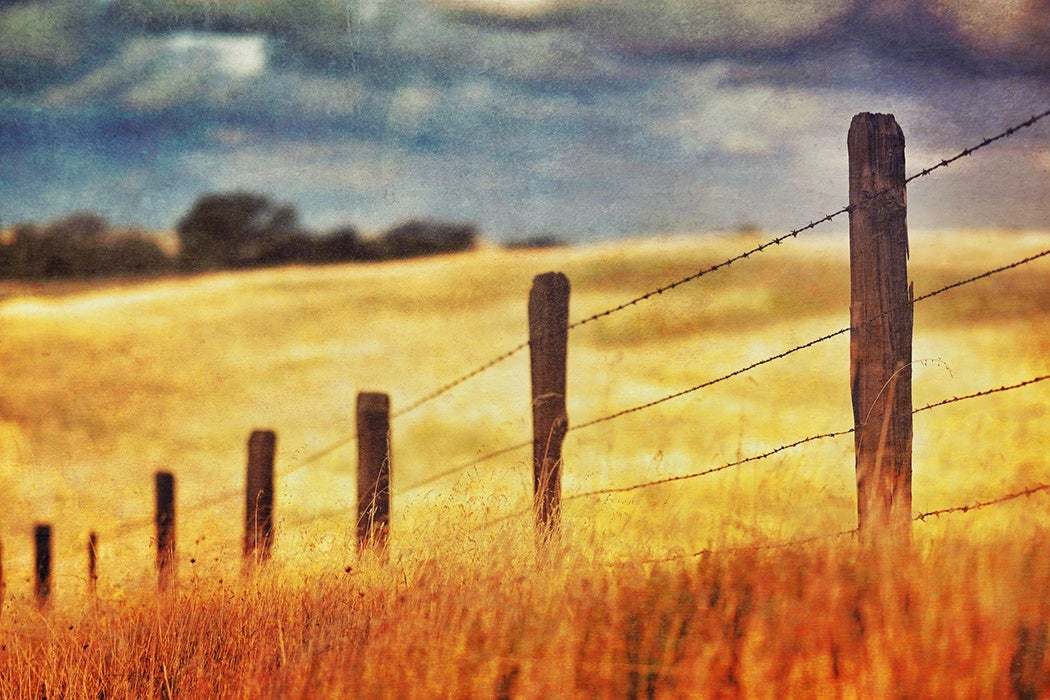On June 25, 1867, Lucien B. Smith of Ohio received the first patent for barbed wire. Richard Hornbeck explains that within a few decades, the new invention—or, actually, a modified version created and marketed by Joseph F. Glidden—transformed the American West.
In the nineteenth century, Hornbeck writes, a farmer often had no legal right to sue if his neighbor’s cows wandered onto his unfenced property and wrecked his crops. And, even if the law was on his side, he typically had a hard time winning compensation.
The best way to protect farms was a wooden fence, but in many parts of the plains, wood was expensive and hard to come by. So, for the most part, people just didn’t bother setting up farms there.
“Writers in agricultural journals argued that the major barrier to settlement was the lack of timber for fencing,” Hornbeck writes. “An 1871 guide for immigrants focused on three main characteristics of farmland in Plains counties: its price, the amount of timber, and the amount fenced.”
Later that decade, Glidden’s barbed wire came on the market. Sales took off fast. According to one account, the inventor got a sense of the potential market when he received an order for a hundred tons of fencing: “he was dumbfounded and telegraphed to the purchaser asking if his order should not read one hundred pounds.”
To get a sense of barbed wire’s impact, Hornbeck compared counties with very little woodland—where wood fences were difficult and expensive to construct—with more wooded areas. He found that, between 1880 and 1900, settlement in counties with no woodland increased by 26 percentage points relative to those with 6 percent woodland. At the same time, many farmers in the areas with few trees shifted from hay—which animals might snack on but wouldn’t wreck completely—to crops like corn, which were more valuable but also more vulnerable.
Weekly Newsletter
All this showed up in the value of farmland. Hornbeck estimates that, between 1880 and 1890, farmers in low-woodland areas may have gained $103 million in land value in 1880 dollars. That was about 0.9 percent of US gross domestic product at the time.
Of course, the impact was greater than a one-time windfall for a bunch of landowners. By making it easier to farm the prairies, barbed wire played a major role in transforming the American West.







